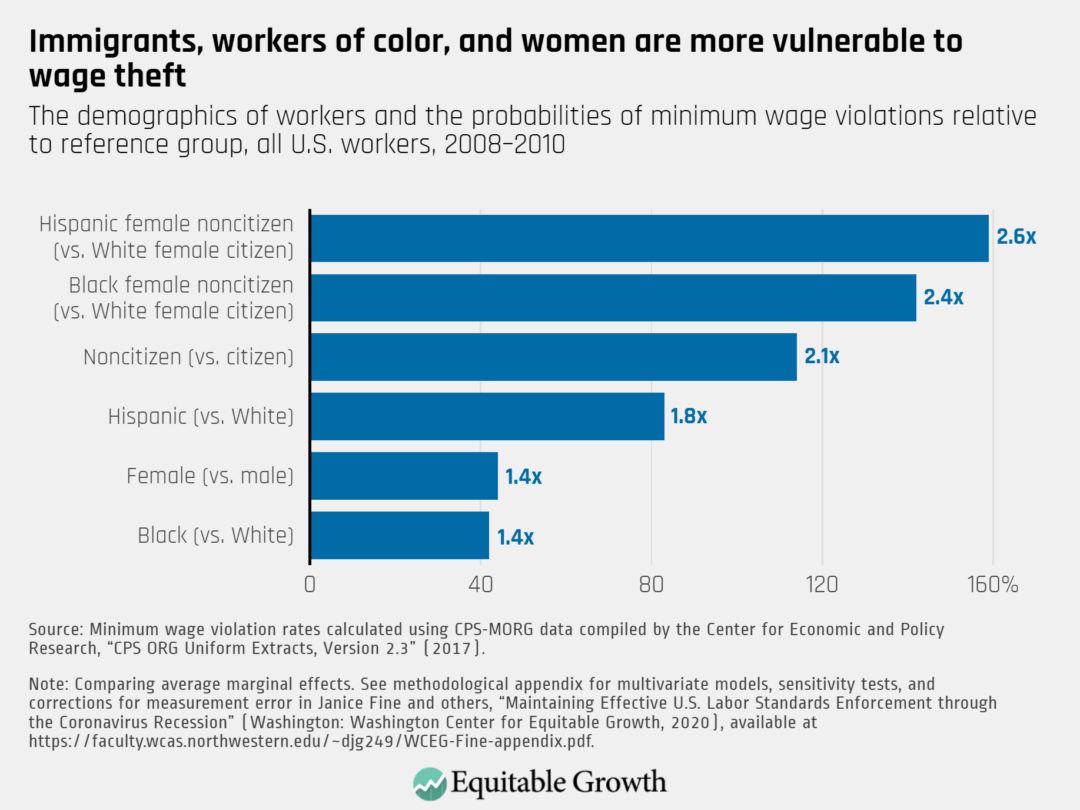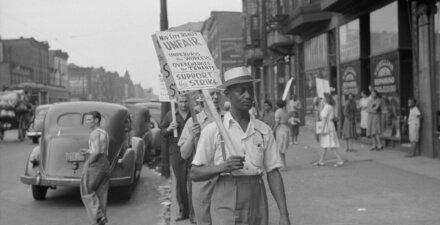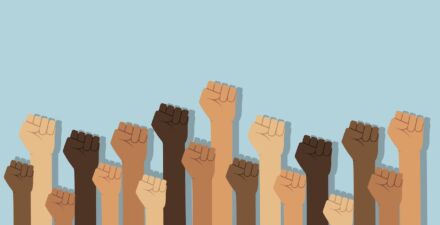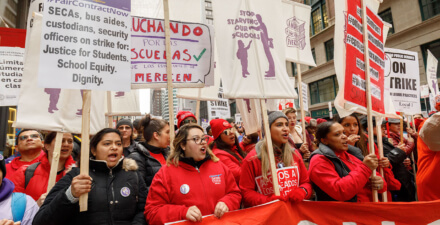Unions and the enforcement of labor rights: How organized labor protects U.S. workers against unfair and illegal employment practices

After decades of declining unionization rates and rising income inequality in the United States, the past few years have seen glimmers of the vibrancy of the U.S. labor movement in the late 19th century and early 20th century, fighting back against both corporate exploitation and shortcomings in the enforcement of labor laws and protections. In addition to boosting wages, leading to narrower income and wage divides, helping workers access income supports, and even fostering interracial solidarity, labor unions are one of government enforcement agencies’ most effective partners in fostering compliance with labor standards.
In short, unions today can be effective partners in ensuring government institutions protect workers and, in turn, foster equitable economic growth. Unions inform members and workers in general about the rights and protections they are entitled to by law, establish mechanisms to voice grievances with less risk of retaliation, and even help shape legislation.
But in order to be even more effective stewards of workers’ rights and protections, unions also need to operate in an institutional context that allows them to act as a countervailing force to the power of employers. But the decades-long decline in the union membership rates, judicial losses, and insufficient mechanisms to push back against employers’ (legal and illegal) union-busting strategies all hold back organized labor’s ability to protect workers.
Below are a few ways in which unions in the United States support the enforcement of labor standards, as well as the policies and reforms needed to ensure that they can carry out this critical role in the economy.
Unionized workplaces are more likely to follow health and safety standards
Even prior to the massive public health risk to in-person workplaces imposed by the COVID-19 pandemic, several studies found that labor unions promote the enforcement of health and safety regulations. For instance, a 1991 paper by David Weil at Brandeis University finds that unionized shops are more likely to enforce the Occupational Safety and Health Act than otherwise-similar nonunion workplaces.
The reason, Weil proposes, is that the presence of a union increases the probability that employees call for a workplace inspection by the Occupational Safety and Health Administration. Inspections, in turn, lead to greater supervision of workplace conditions and create a strong incentive for employers to comply with health and safety standards. A key point from this research is that unions do not displace the necessity of workplace protections but increase compliance.
Further, a number of studies show that the benefits of safer unionized workplaces have ripple effects that benefit broader society. For instance, a study analyzing patient outcomes in unionized and nonunionized hospitals in California between 1996 and 2005 finds that the quality of service was substantially better in hospitals that had a successful union election.
More recently, a team of researchers studying the spread of COVID-19 in schools and nursing homes find that the presence of unions is associated with the adoption of mask mandates, as well as with better health outcomes for both nursing home residents and workers. Specifically, the researchers find that unionized nursing homes experienced 10.8 percent lower resident COVID-19 death rates and 6.8 percent lower COVID-19 infection rates among workers than nonunionized nursing homes.
Unions protect workers against wage theft
Labor law violations, such as wage theft, are an alarmingly common feature of the U.S. labor market. A team of researchers studying wage theft during the Great Recession of 2007–2009 and its immediate aftermath, for example, found that the probability that a low-wage worker was paid less than their applicable minimum wage stood between 10 percent and 22 percent. In addition, the authors found that wage theft is especially likely to affect low-wage workers from vulnerable groups, with workers of color, non-U.S. citizens, and women all having a higher probability of experiencing wage theft than White workers, U.S. citizens, and men. (See Figure 1.)
Figure 1

Yet the evidence also shows that unions can push back against wage theft by both promoting pro-labor legislation and by establishing partnerships with enforcement agencies and community organizations. Scholars at the University of Illinois at Urbana-Champaign find, for instance, that states with greater union membership rates are more likely to introduce and pass legislation against wage theft. The reason, the authors propose, is that labor unions provide advocates with political power that make the enactment of wage theft legislation more likely.
Indeed, coalitions with worker centers, unions, and advocacy groups allow for what Janice Fine, Jenn Round, and Hana Shepherd of Rutgers University and Daniel Galvin of Northwestern University call co-enforcement—partnerships that give government agencies access to essential information for detecting and investigating labor law violations.
Violations to labor standards contribute to inequality, but unions can push against both lack of compliance and wage disparities
By contributing to the enforcement of labor standards, unions also temper disparities in wages and job quality. In recent research, Ioana Marinescu at the University of Pennsylvania, Yue Qui at Temple University, and Aaron Sojourner at the University of Minnesota find that higher average wages, lower labor market concentration, and a higher union coverage rate are all associated with fewer labor violations.
Specifically, the authors analyze data on violations of labor rights enforced by the Occupational Safety and Health Administration, the Wages and Hours Division of the U.S. Department of Labor, and the National Labor Relations Board. They find that higher union coverage rates have a “protective effect,” reducing the prevalence of violations. As such, the authors propose, “[o]ur results suggest that job quality is positively correlated with the wage and is boosted by unionization.”
In addition to improving the enforcement of statutory workplace protections at the federal, state, and local levels, unions’ collective bargaining agreements also are a tool for helping workplaces function more efficiently and equitably through establishing standards. The greater wage transparency that comes along with agreed-upon wage determination in collective bargaining agreements, for example, can reduce arbitrary wage disparities, particularly by gender. These mechanisms are part of the reason unions help reduce the gender wage gap, since unionized workplaces have greater wage transparency.
Unions need institutional support to be effective in safeguarding labor rights
Despite unions’ important role in protecting labor standards—as well as raising pay and instilling norms of fairness and equity—outsized employer power and lack of institutional support for organized labor has, for decades, held back unions’ ability to counteract unfair and illegal employment practices. Research by Anna Stansbury at the Massachusetts Institute of Technology finds, for instance, that because the cost firms face when failing to comply with landmark laws, such as the Fair Labor Standards Act and the National Labor Relations Act, is relatively low, it is unsurprising that employers engage in illegal labor practices, such as firing workers for union organizing.
In an Equitable Growth working paper on how collective action interacts with monopsony, Mark Paul of New College of Florida and Mark Stelzner of Connecticut College also demonstrate how institutional support is a critical factor in ensuring unions can serve as a countervailing force in labor market dynamics.
Shortcomings in the enforcement of labor rights and protections hurt U.S. workers and the economy as a whole. Violations to labor standards are associated with greater inequality, higher employee turnover, and, of course, lower worker well-being. Outsized corporate power distorts markets and subverts economic growth. Yet the policies and protections designed to correct for these market failures are only as effective as their enforcement. By contributing to the compliance of labor standards and ensuring workers are partners in establishing efficient and fair workplaces, unions therefore improve labor market dynamics to reinforce broadly shared economic growth.






